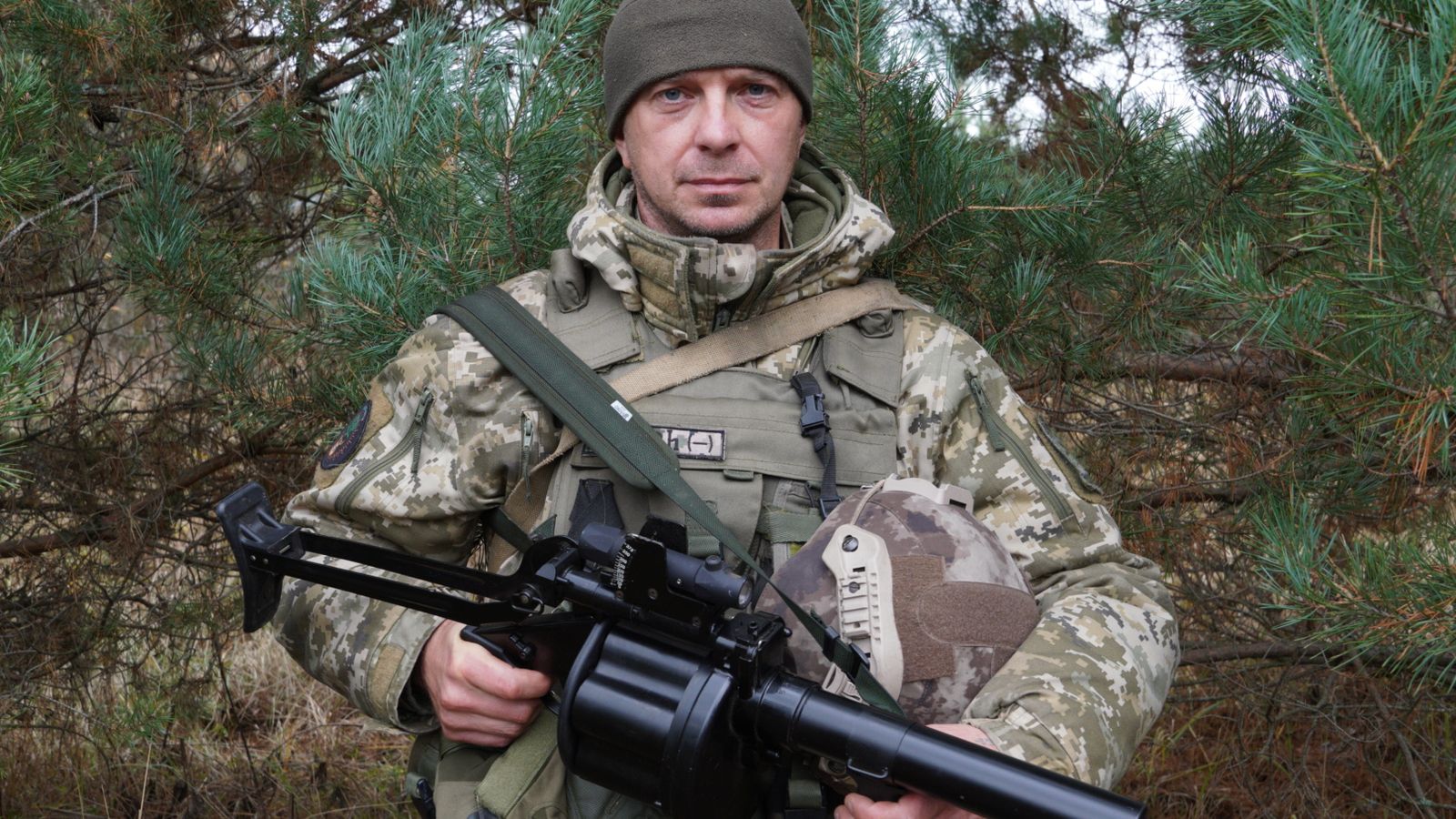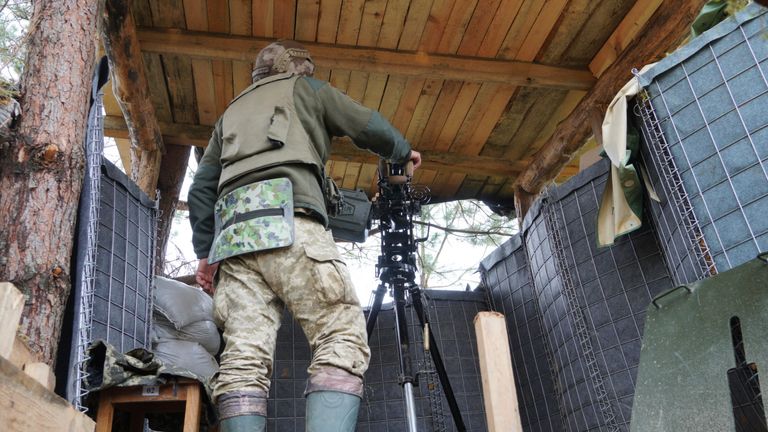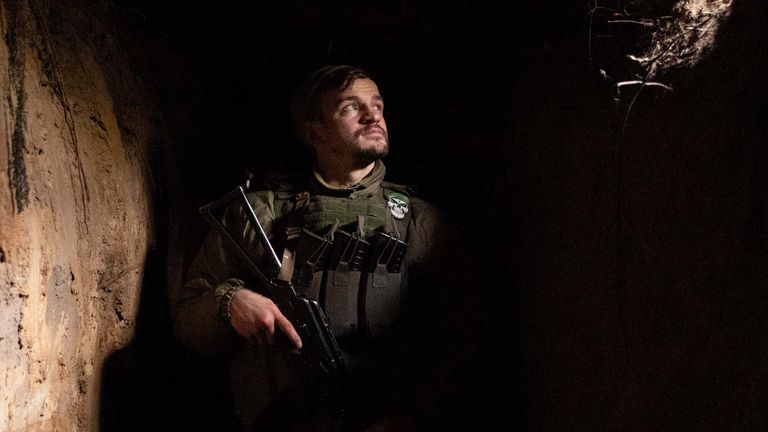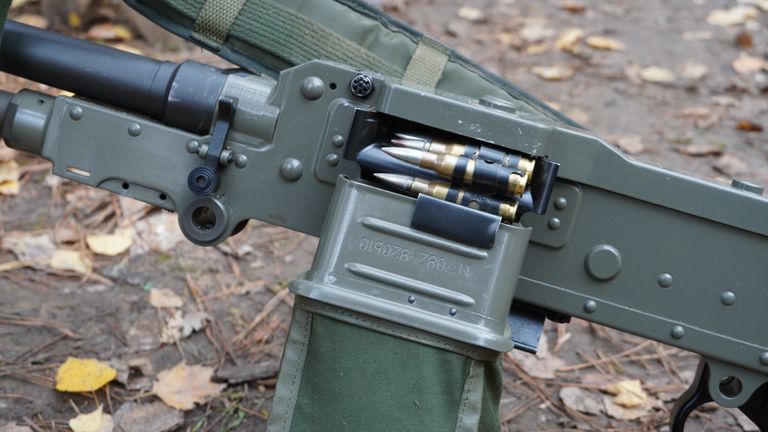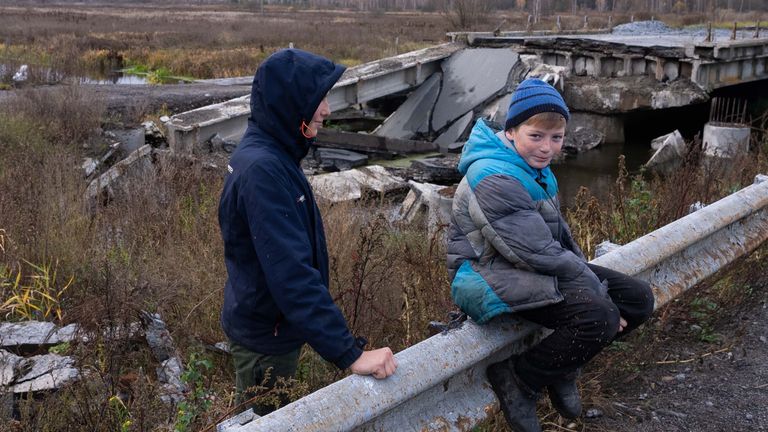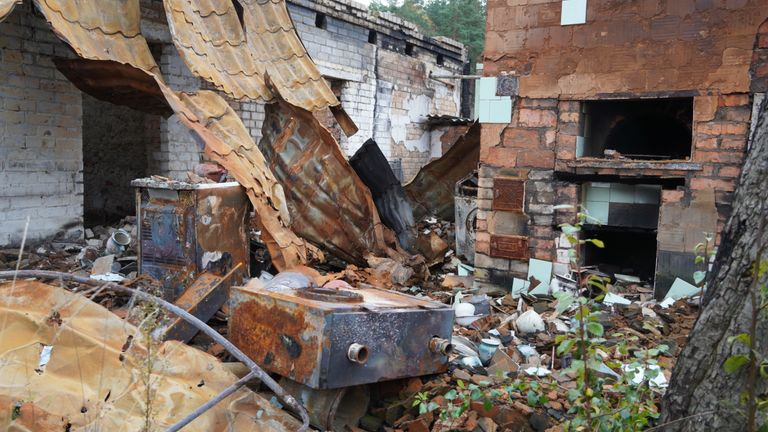They tell us to run, and so we run. Through the scrub, the mud and the undergrowth until we stop under the shelter of trees. Out of breath, out of sight and, for now, out of danger.
This is a place of mud, weapons and nervous energy. We are in the area where the borders of Ukraine, Belarus and Russia converge. What was once a novelty on a map is now a tangible military pinch point and Russia’s next assault on Ukraine might well come through this terrain.
We are with the Ukrainian Border Force, who monitor and guard the frontier. A year ago, these people worried about customs checks on the hundreds of lorries that came through every day, en route between Turkey and Russia. It was, says a smiling, broad-shouldered man guard called Barack, “good work – interesting, not too hard”.
Now, there are no lorries and the guards have become the first line of defence. If Russian troops do pour through this border once more – and there is a growing feeling that they will – then these men and women will be the ones to greet them; to try to repel the Russian army. And so, the border guards have adapted to a new and vastly more perilous world.
“I don’t want to do this,” one of them says to me. “But I do it because I love my land and my country. If I need to fight, I will do this without thinking. It’s just work.”
But of course, it isn’t really “just work”. Through the sights of a heavy machine gun, you can see Belarus, just a few kilometres away. The Russian border is not much further away, and shells are fired over regularly. We can hear the regular booms as they land.
Many people around here have left. Those who remain have become accustomed to violence raining down on them – they use bicycles instead of cars, because bikes don’t attract drones.
Bonhomie, determination and adrenaline
Not far away is a small village that stands right on the border, cut off from the world. It was once home to 100 people but has been almost completely demolished. Maybe ten people remain, and they are almost unreachable.
We are the first foreign journalists to come here and spend time with these guards. What we find is a blend of bonhomie, determination and adrenaline. They’ve already seen one Russian invasion here and they fear another.
Thousands of newly mobilised Russian troops have been sent to Belarus this month to create a so-called “regional force” to defend the border.
In theory, it is a collaboration between the two countries, but few, beyond the Kremlin or Minsk, take that at face value. Just about everyone else sees it as a device for strengthening the Russian presence ahead of a possible attack, designed to stretch Ukrainian resources by opening up another offensive.
There is a precedent, of course. Back in February, Russian troops came over this border and took over the area. They formed a long convoy of vehicles that set off in the direction of Kyiv, before eventually withdrawing in April.
Since then, the border guards have been preparing. They have dug long trenches, where you walk through mud in near darkness with thoughts of World War One in your mind. And yet, in one of these underground rooms, we see computer terminals linked to the Starlink satellite systems.
I talk to Barack in a room carved out from the trench. There are wooden boards on the floor and a crude bunk bed in the corner. He laughs when I say it feels like we’ve gone back a century, but agrees. I ask him about the Russian troop build-up a short distance away.
“They are becoming more aggressive, but our Ukrainian forces give them a bloody nose!” he laughs again.
‘We need more weapons’
They have a variety of weaponry – heavy machine guns, anti-tank missiles, rifles, ammunition and so on. There are minefields around us and a variety of concealed look-out posts. The job of preparing to resist a huge invading army is an intimidating one. It’s not one that they’re really trained for, but it’s one they’ve embraced.
The trouble is that while the spirit is boundless, the resources are not.
“We need more weapons because we don’t know the intensity of the possible attack. We do not know how long we will need to maintain the defence on the border,” says Halyna, the spokesperson for the Chernihiv border guard unit.
“We are reacting to the raising of the risk by the invasion with more preparation, more fortification – we want to stop them at the border.
“We need heavy weapons. If they send infantry, you can use assault rifles and machine guns and it will all be contained. The problem begins when tanks and their armoured personnel carriers come from their side.”
What, I ask, were the lessons they learned from the February attack?
“That they are unpredictable. This is the first lesson. And they are not our friends.”
It is a lesson that came as a brutal shock to many people in this region, where Ukrainians, Belarusians and Russians have mixed for so many years. The nearest town to this border is Horodnia, which was the first to be taken by the Russians and the last to be relinquished.
They have rebuilt and repainted, but you can still see scars. A little out of town, we came down a rough road and found burnt out trucks, craters, shell casing and even an unexplored rocket lying in the woods.
‘No more brotherly Belarus, no more good Russia’
The houses bear witness to the violence. Oleksander and Olga remember it well. An explosion shook their house so violently that the ceiling fell in on their heads. “There are relatives of ours in Russia and everywhere but now the situation is such that we cheer exclusively for our country,” says Oleksander.
“There is no longer a friendly, brotherly Belarus, or a good Russia. There is only us and them – enemies. This is it.”
It is tempting to be intoxicated by this bravado. Certainly, Ukraine is a nation where resilience is armoured by a sense of grievance and the support of so much of the world. But it is also a nation whose heart has broken.
There is a house at the end of the street that is burnt out. It was bombed, caught fire and was remorselessly wrecked. Nadia watched all this happen from over the road, terrified. She raised the alarm, brought as much water as she could and then cried.
Not long after, her mother died.
Nadia is Belarusian but came here many years ago. Now she is fragile and scared, prepared to hide from another Russian invasion in the outside cellar where she keeps potatoes for the winter. But she fears it would simply collapse and seal her in.
“There is no rest for us here. My nerves are completely gone. What has Ukraine done to them? We have such great people here. They are peaceful people.
“So many people were killed. So many kids. So much grief.” And she weeps.
